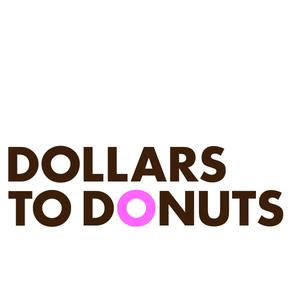
Dollars to Donuts
Steve Portigal
- 31 minutes 5 secondsInterviewing Users anniversary and new audiobook!
It’s the first anniversary of the second edition of Interviewing Users, and it’s now available as an audiobook. Listen to this episode for a sample.
Show Links
The post Interviewing Users anniversary and new audiobook! first appeared on Portigal Consulting.21 October 2024, 7:04 pm - 49 minutes 53 seconds52. Emily Sun of Hipcamp
In this episode of Dollars to Donuts, I talk with Emily Sun, the head of Design and Research at Hipcamp. We discuss staying engaged in work, designers doing their own research, and research at a small, growing company.
There’s actually a big opportunity with smaller companies. At small startups, you are much closer to the people who are making the long term vision for what the company is going to be. Because we have access to that level of leadership, there is a lot that can be influenced through research. – Emily Sun
Show Links
- Episode transcript
- Make Things That Matter — Steve Portigal: Improving your user research process
- Interviewing Users, second edition
- Emily Sun on LinkedIn
- Hipcamp
- The Fun Scale
- Alyssa Ravasio, Founder + CEO of Hipcamp
- Sifteo
- CHI conference
- 3DR
Help other people find Dollars to Donuts by leaving a review on Apple Podcasts.
The post 52. Emily Sun of Hipcamp first appeared on Portigal Consulting.30 July 2024, 7:40 pm - 1 hour 18 minutes51. Tamara Hale of Splunk
This episode of Dollars to Donuts features my conversation with Tamara Hale, the Director of Product Experience – Research & Insights at Splunk. We talk about the long tail of impact, being an anthropologist of work, and having a creative practice.
The ‘doing the research’ bit is only about a quarter of your job. The rest of it is all the other stuff that goes around it. It’s about storytelling and influence and developing a vision and creating alignment around who the customers are and creating alignment on what actually are the business goals. It’s your stakeholder mapping. It’s your internal research. It’s your knowledge management. It’s improving how we work. All that stuff is part of research, and if you only think of your job as that quarter, you’re missing out on some of the most interesting and also trickiest parts of the job. – Tamara Hale
Show Links
- Episode transcript
- Tamara Hale
- Splunk
- Tracey Lovejoy
- Catalyst Constellations
- Blurring the Lines: Building a collaborative dialogue from the intersection of creative practice, ethnography and business
Help other people find Dollars to Donuts by leaving a review on Apple Podcasts.
The post 51. Tamara Hale of Splunk first appeared on Portigal Consulting.3 July 2024, 4:23 pm - 58 minutes 54 seconds50. Vanessa Arango Garcia of Delivery Hero
In this latest episode of Dollars to Donuts, I talk with Vanessa Arango Garcia, Director UX Research & Research Operations at Delivery Hero. We discuss creating an engaged research community across a global organization, being accountable for impact, and how today’s challenges provide an opportunity for the research progression to grow.
We care a lot about our craft and we need to keep the quality up, but we also need to be pragmatic in how we are able to optimize that process of doing research to focus in the next stages. We dedicate too much in doing the research, delivering that report. And later, sometimes it’s very difficult to dedicate time to following up, connecting with the team, sitting together, ideating, thinking about the roadmap, because we don’t have time. We are jumping from research to research to research because every research takes time. – Vanessa Arango Garcia
Show Links
- Episode transcript
- Rally AMA with Steve Portigal on what makes a research practice mature
- Interviewing Users, second edition
- Vanessa Arango Garcia
- Delivery Hero
- PedidosYa
- EuroCopa
- The new researcher: Navigating the evolving landscape of UX Research
Help other people find Dollars to Donuts by leaving a review on Apple Podcasts.
The post 50. Vanessa Arango Garcia of Delivery Hero first appeared on Portigal Consulting.26 June 2024, 12:00 am - 1 hour 11 minutes49. Sarah Gregory of Coinbase
This episode of Dollars to Donuts features my conversation with Sarah Gregory, Director of User Research for Consumer at Coinbase. We talk about research comms, archiving user research, and doing research that no one is yet asking for.
Our email is designed for one very specific leadership stakeholder, and it is tailored to how that person likes to consume information. There’s a different stakeholder that hates email. That person, I use Slack. Another stakeholder tends to listen very well when they’re live in a regularly recurring monthly meeting. And so I make sure that research always has one or two slides in that meeting. You have to know exactly who you want to be listening, and you have to change your techniques depending on who that is. Which is really just understanding your user, right? – Sarah Gregory
Show Notes
- Episode transcript
- Rally AMA with Steve Portigal on what makes a research practice mature
- Interviewing Users, second edition
- Sarah Gregory
- Coinbase
- The Basics about Cryptocurrency
- Bitcoin
- Blockchain
- Ethereum
- McDonald’s Theory
- Sian Townsend
- Jobs To Be Done
- Human-Computer Interaction
- Becoming a Level 1 Sommelier
- Drops of God
- NFT
Help other people find Dollars to Donuts by leaving a review on Apple Podcasts.
The post 49. Sarah Gregory of Coinbase first appeared on Portigal Consulting.19 June 2024, 10:26 pm - 1 hour 13 minutes48. Jamika Burge of Capital One
In this episode of Dollars to Donuts I speak with Jamika Burge, the head of research for Data and AI at Capital One. We talk about her journey through academia, discovering user research, and intersectionality.
Doing good – for me, as a researcher, and as someone who wants to do good in the world, it means understanding people’s needs in context and providing opportunities for them to succeed. That’s what that means for me. Success can mean different things to different people. I can guess what success means from a business perspective. I can even guess what success means from a researcher perspective, but ultimately it’s that end user who tells us whether or not we got it right. I want that person to feel as an end user, free to share with us when we got it wrong, but also when we got it right. – Jamika Burge
Show Notes
- Episode transcript
- Interviewing Users, second edition
- Steve Portigal on the UX Podcast
- Jamika Burge on LinkedIn
- What is the Positive and Negative Affect Schedule? (PANAS)
- Center for Human-Computer Interaction at Virginia Tech
- IBM’s Thomas J. Watson Research Center
- John M. Carroll at Penn State
- Mary Beth Rosson at Penn State
- Office of Naval Intelligence
- DARPA
- Spelman College
- blackcomputeHER
- #blackcomputeHER conference
- National Academies
- Capital One
Help other people find Dollars to Donuts by leaving a review on Apple Podcasts.
The post 48. Jamika Burge of Capital One first appeared on Portigal Consulting.7 June 2024, 11:31 pm - 1 hour 10 minutes47. Akshay Verma of Duolingo
This episode of Dollars to Donuts features my interview with Akshay Verma, the head of User Research at Duolingo. We talk about being qualitative focused in an experimentation-driven organization, research team structures, team rituals, and sharing knowledge between researchers.
I don’t actually want to bemoan or belabor this concept of a room that we’re invited to or not. At Duolingo, I feel it pretty acutely just because we do have a lot of rituals and traditions at Duolingo around how product gets built. And it’s great. It works. It works really well. But, you know, I could spend a lot of time and energy going crazy, being like, “How do I get invited to these rooms?” and then get upset when it doesn’t happen? I actually don’t. I try my best, but I think our energy is probably spent elsewhere.” – Akshay Verma
Show Links
- Episode transcript
- Akshay on LinkedIn
- Duolingo
- How Duolingo is using its ‘unhinged content’ with Duo the Owl to make people laugh on TikTok
- FigJam
- IDEO
- Stanford d.school
- Calendly
- How the Underground Dance Music Scene Makes Me a Better User Researcher
- Get Familiar With Detroit Techno: 10 Essential Songs
Help other people find Dollars to Donuts by leaving a review on Apple Podcasts.
The post 47. Akshay Verma of Duolingo first appeared on Portigal Consulting.4 June 2024, 12:48 am - 1 hour 6 minutes46. Daniel Escher of Remitly
In this episode of Dollars to Donuts I speak with Daniel Escher, Director of UX and Research at Remitly. We talk about more ways for researchers to add value, business questions over research questions, and the things that researchers worry about.
Where I think collective identity can be limiting is when someone thinks of themselves as a researcher and says, “Therefore, that means this is my small box of things that I do and ways that I contribute.” And what I always want to do is push that box to be bigger, right? I’m not at all saying that the box doesn’t exist in any way. But we as researchers can drive far more decision-making, far more strategy, far more hypotheses than I think we realize. I think that we tend to want to hand off work to other people when actually what I encourage my team to do is figure out where are the places where actually a handoff doesn’t make sense, but a handshake makes sense. There’s some contact there. Or where does hand-holding make sense, where there’s really extended involvement? – Daniel Escher
Show Links
- Episode transcript
- Steve and Inzovu – Storytelling workshops
- Formats Unpacked
- Daniel on LinkedIn
- Remitly
- Nazir Harb Michel on LinkedIn
- Savannah Young on LinkedIn
- Angelina Erine Theodorou on LinkedIn
- José G. Soto Márquez on LinkedIn
- James by Percival Everett
- Clay Christensen’s Milkshake Marketing (and Jobs to be Done)
- RITE Method
Help other people find Dollars to Donuts by leaving a review on Apple Podcasts.
The post 46. Daniel Escher of Remitly first appeared on Portigal Consulting.24 May 2024, 8:53 pm - 41 minutes 21 seconds45. Reggie Murphy of Zendesk (part 2)
This episode of Dollars to Donuts features part 2 of my two-part conversation with Reggie Murphy of Zendesk. We talk about psychological safety at work, Reggie’s career journey, and online career resources for UX researchers.
That helps the team be better researchers when they feel like they have a space where, man, I don’t have to be perfect every time. I’m going to definitely strive really hard to do great work and try to be successful. But I have a leader who’s going to have my back if something goes wrong. It works. I want every people leader who’s listening to this to understand that. That you’re not going to get it right every time. But if you set the environment and the intention of being a leader who understands that people will make mistakes, but it’s not that you made the mistake. It’s, okay, how do you learn from it and not do it again? And how that we can set up parameters within the team to address that particular mistake if it was something like a research protocol or something. – Reggie Murphy
Show Links
- Episode transcript
- Steve’s corporate speaking engagements
- Steve on the Rock and Roll Research podcast
- Interviewing Users, second edition
- Reggie on Dollars to Donuts (part 1)
- Reggie on LinkedIn
- Zendesk
- The Fearless Organization: Creating Psychological Safety in the Workplace for Learning, Innovation, and Growth by Amy C. Edmondson
- Radical Candor: Be a Kick-Ass Boss Without Losing Your Humanity by Kim Scott
- Digital Body Language: How to Build Trust and Connection, No Matter the Distance
- Magid
- I Wish I Knew podcast
- Laura Cochran on LinkedIn
- UXR resources
Help other people find Dollars to Donuts by leaving a review on Apple Podcasts.
The post 45. Reggie Murphy of Zendesk (part 2) first appeared on Portigal Consulting.16 May 2024, 10:41 pm - 44 minutes 37 seconds44. Reggie Murphy of Zendesk (part 1)
This episode of Dollars to Donuts features part 1 of my two-part conversation with Reggie Murphy of Zendesk. We talk about aligning the work of the research team with stakeholder OKRs and empowering non-researchers to do user research.
The researcher would go into these meetings and say we’re going to do a “I Wish I Knew” exercise, where we start thinking about what we’re building for our customers, what are the questions outstanding that we still don’t have an answer to. We’d go through that exercise, and then we’d prioritize that list. I can’t tell you how valuable those exercises were and how our stakeholders looked at us and said, “Wow, I did not know that research could add this kind of value to our conversation,” because it really helped them see. You know, that question that we’ve been battling around in these meetings isn’t really the one that’s most important. It’s this one. And to see it all together was a revelation for some of our stakeholders. I can’t tell you how important that was. – Reggie Murphy
Show Links
- Episode transcript
- Interviewing Users, second edition
- Portigal Consulting services, including training
- The Product Manager Podcast: How To Master User Interviews To Build More Lovable Products
- Reggie on LinkedIn
- Zendesk
- The Maze podcast: Scaling research through democratization with Reggie Murphy
- OKRs
- Zendesk Relate
Help other people find Dollars to Donuts by leaving a review on Apple Podcasts.
The post 44. Reggie Murphy of Zendesk (part 1) first appeared on Portigal Consulting.14 May 2024, 12:14 am - More Episodes? Get the App
Your feedback is valuable to us. Should you encounter any bugs, glitches, lack of functionality or other problems, please email us on [email protected] or join Moon.FM Telegram Group where you can talk directly to the dev team who are happy to answer any queries.
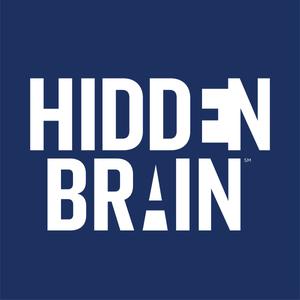 Hidden Brain
Hidden Brain
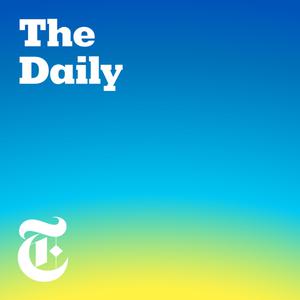 The Daily
The Daily
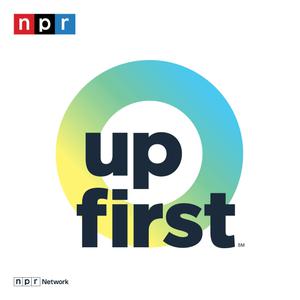 Up First from NPR
Up First from NPR
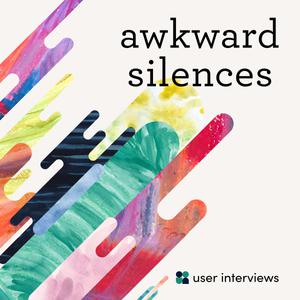 Awkward Silences
Awkward Silences
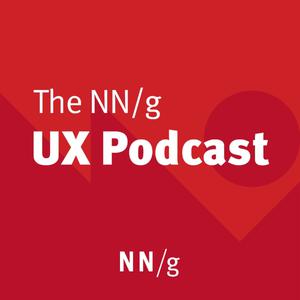 NN/g UX Podcast
NN/g UX Podcast
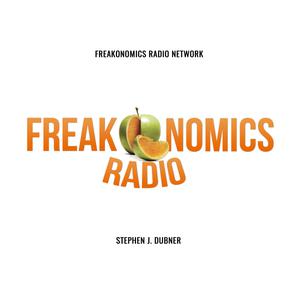 Freakonomics Radio
Freakonomics Radio